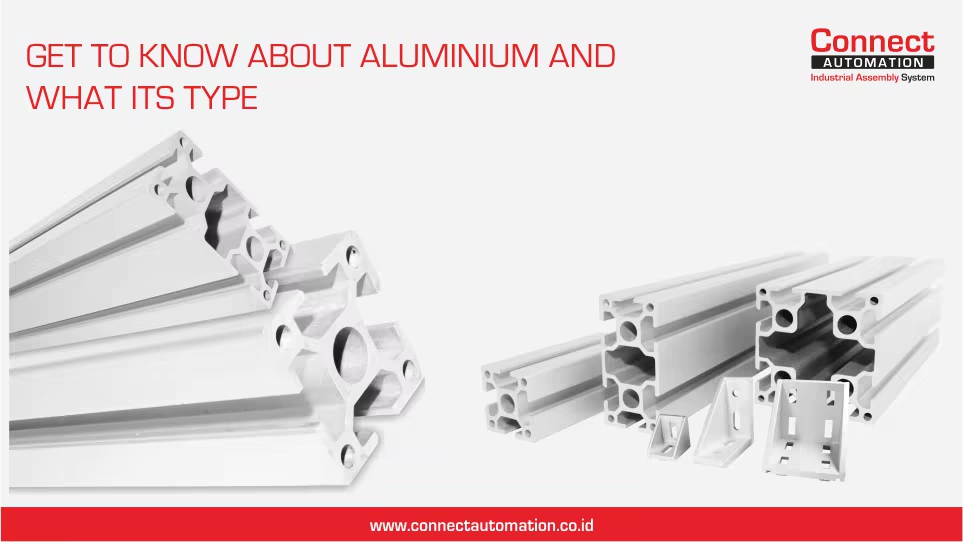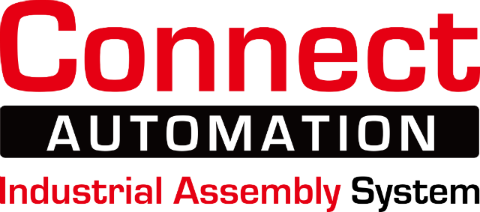Get more to know about aluminum and what its types

Aluminum is a light metal that has good corrosion resistance, and is often used in various sectors, especially industry. This material, which is known to be sturdy and strong, is the choice for producers and consumers who want to have goods with a relatively long usage period. The use of aluminum itself can be found as a frame for industrial equipment, one of which is a conveyor. The aluminum used in conveyors is in the form of bars, or what is usually called Aluminum Profile. The aluminum profile itself is formed through a fairly long process and molded in bar form, or what could be called an extrusion process. So it can produce aluminum shapes that suit existing needs. The material of this aluminum profile does not completely use aluminum, but rather a combination of aluminum and alloy elements such as nickel, copper, magnesium, titanium, and the like. Often also called Aluminum Alloy. Aluminum Alloy has various types that can be used according to your needs, here is the explanation:
Aluminum Copper Alloy (2000 Series)
This type of aluminum is used for parts that work at high temperature pressure. This 2000 series aluminum contains values of 0.7-6.8% copper and small amounts of silicon, manganese, magnesium and other elements. This series has additional elements originating from Copper with advantages including: providing additional strength and hardness, increasing engine capability, having higher strength than other grades, and can withstand high temperature ranges. The 2000 Series is a heatable aluminum grade. Precipitation hardening can be done to increase its strength. The deposition of intermetallic Al2Cu during heating can increase the hardening of the alloy. However, intermetallic compounds can make this series difficult to weld. Some 2000 series grades are not suitable for arc welding due to their susceptibility to heat cracking and stress corrosion cracking. Examples from the 2000 series include: 2011 Aluminum is a free machining alloy. It has excellent machinability (i.e., produces small chips and provides a better surface finish), making it suitable for high-speed turning. This series is a very versatile blend. However, it has poor corrosion resistance, which can be overcome by coating or anodizing. They are not recommended for forming and welding. Aluminum 2024 is one of the most widely known high-strength aluminum alloys. This alloy has good fracture resistance, fracture toughness, and low fracture crack growth. This series is ideal for heavy duty applications under pressure for long periods. However, it also has poor corrosion resistance, which can be overcome by coating or anodizing
Aluminum Manganese Alloy (3000)
3000 series aluminum grades contain 0.05-1.5% manganese as the main alloying element. Manganese gives the alloy higher mechanical strength than pure aluminum, which is able to withstand high temperatures. The 3000 series has good corrosion resistance, robustness and malleability. However, this series cannot be heat treated and can only be hardened by cold working. So it is more suitable for welding. Examples from the 3000 series, namely: Aluminum 3003 is the most widely used aluminum grade, containing 1.5% manganese and 0.1% copper. It has excellent mechanical properties than Aluminum 1100 with 20% higher tensile strength. These grades can be deep drawn, spun, welded, and brazed. Aluminum 3005 has good elongation, corrosion resistance and processing performance and can be melted into alloys with different hardness. It is widely used to produce coils and strips in a wide range of temperatures, with a thickness of 0.1 mm to 50 mm. Aluminum 3005 is commonly included in wet applications, such as refrigerators and air conditioners, as well as building materials and colored aluminum.
Aluminum Silicon Alloy (4000)
4000 series aluminum grades contain 3.6-13.5% silicon and small amounts of copper and magnesium. Silicon is an element of the main alloy; this lowers the melting point of the alloy, thereby increasing fluidity during the molten state. This makes the 4000 series a good filler material for welding and brazing. Some grades below the 4000 series can be heat treated depending on the amount of copper and magnesium in the alloy. Such additions will respond well to heat treatment. Heat treatable grades can be used for welding when combined with aluminum grades in the heat treatable series.
Aluminum Magnesium Alloy (5000)
5000 series aluminum grades contain 0.5-5.5% magnesium. This material cannot be heat treated, can only be hardened by cold working, and has medium to high strength. 5000 series aluminum is weldable, resistant to corrosion and alkali. Aluminum 5005 is used in general sheet metal work. This grade has good formability and is easy to bend, twist, draw, stamp and roll. It has good corrosion resistance and is resistant to marine environments. Examples from the 5000 series, namely: Aluminum 5083 contains small amounts of manganese and chromium. It is highly resistant to most industrial chemicals and seawater. It maintains high strength after welding. Aluminum 5052 has the highest strength among non-heat treatable aluminum grades. This aluminum exhibits good finishing qualities and offers better resistance to marine environments than other aluminum grades. It can be drawn and formed into complex shapes due to its excellent workability.
Aluminum Magnesium Silicone Alloy (6000)
6000 series aluminum grades contain 0.2-1.8% silicon and 0.35-1.5% magnesium as the main alloying elements. This value is given a hot solution to increase its yield strength. Precipitation of magnesium-silicide during the alloy hardening process. High silicon content increases precipitation hardening which can result in reduced durability. However, this effect can be reversed by adding chromium and manganese which can inhibit recrystallization during the heating process. This series is difficult to weld due to its sensitivity to solidification cracking, so proper welding techniques are required. Examples from the 6000 series, namely: Aluminum 6061 is the most versatile of the heat-resistant aluminum alloys. This series has excellent formability (using bending, deep drawing, and stamping), good corrosion resistance, and can be welded using any technique, including arc welding. The 6061 alloy elements make it resistant to corrosion and stress cracking, as well as being weldable and easy to form. Aluminum 6061 is used to produce all forms of aluminum structures, including angles, beams, channels, I-beams, T-shapes, as well as radius and tapered corners, all of which are referred to as American Standard beams and channels. Aluminum 6063 has high tensile strength, good corrosion resistance and excellent finishing quality, and is used for aluminum extrusions. It is suitable for anodizing because it can produce a smooth surface after forming complex shapes and has good weldability and average machinability. Aluminum 6063 is called architectural aluminum because it is widely used for fences, window and door frames, roofs, and balustrades. Aluminum 6262 is a free machining alloy with excellent mechanical strength and corrosion resistance.
Aluminum Zinc Alloy (7000)
7000 series aluminum grades contain 0.8-8.2% zinc as the main alloying element. This series consists of some of the highest strength aluminum alloys. 7000 series grades can be heat treated; Heat treatment with a solution followed by high temperatures can be carried out to increase its yield strength. The deposition of the intermetallic compounds MgZn2 and Mg3Zn3Al2t hardens the alloy. The 7000 series grades have good corrosion resistance, which is enhanced by the addition of copper. Most grades in this series cannot be welded because they are too susceptible to stress corrosion cracking and heat cracking. Examples from the 7000 Series, namely: Aluminum 7075 is a high performance alloy with one of the highest strengths among aluminum grades. It is harder, has higher tensile strength than Aluminum 6061, and can withstand pressure for a long time. Aluminum 7075 is called an aircraft or aerospace alloy because of its high strength and resistance to stress. It was originally developed during World War II as a method of warship production.
Get FREE consultation with our sales engineer team!
Appoint a Consultation
Conclusion
Aluminum has many alloys that are adapted to its use in the industrial sector. Because they have different characteristics, resistance, and shortcomings. The aluminum alloy that is often used in conveyors is the 6000 series, but everything can be adjusted to suit your needs. Connect Automation has the best quality Aluminum Profile in its class, which definitely has advantages that can support your conveyor well. Interested in finding out more? Immediately consult with our Sales Engineer!
